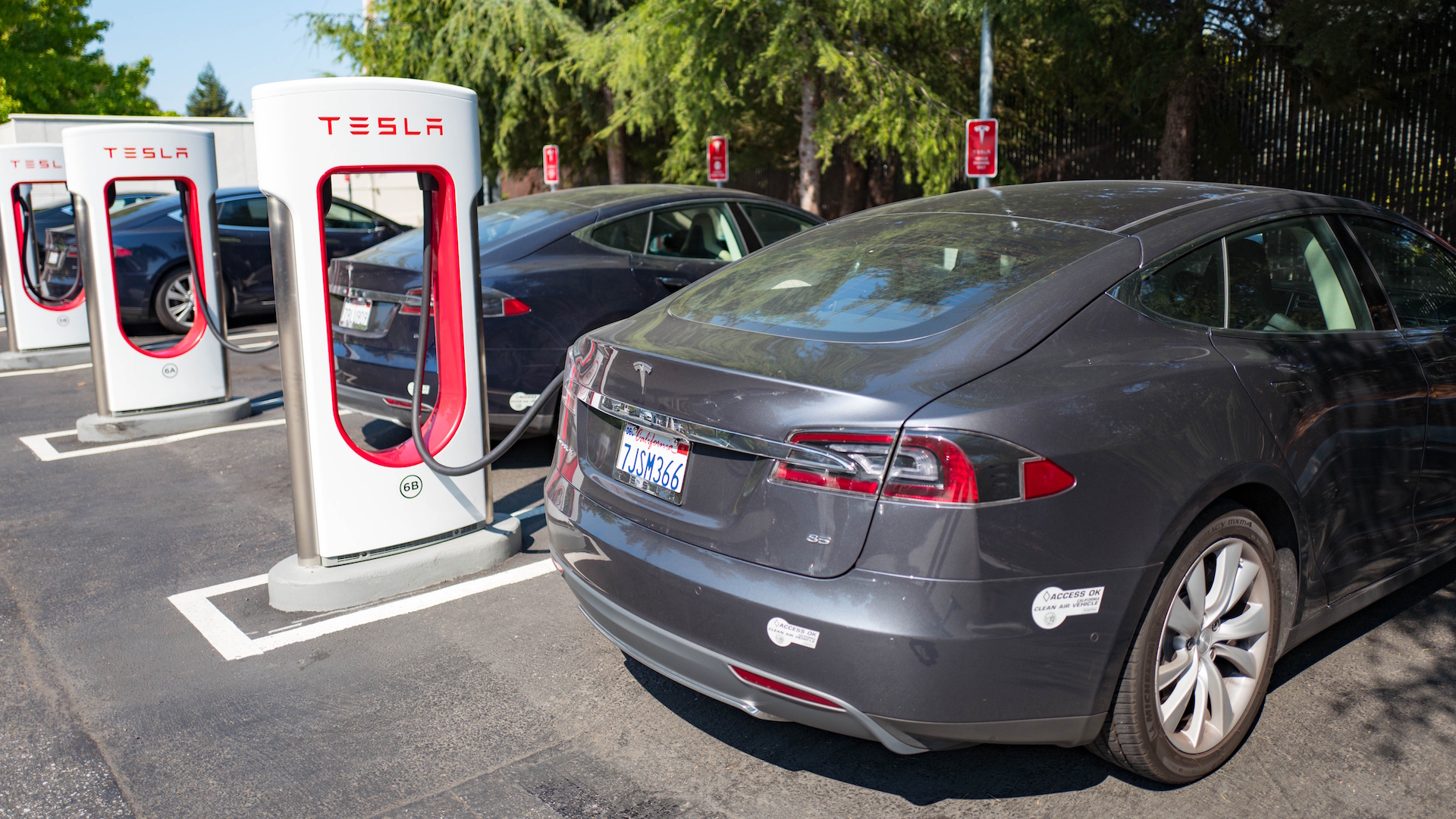

After complaints of slower-than-expected charging rates at Superchargers began to populate Tesla forums, the electric car maker confirmed that it has been purposely limiting charge rates for cars that used DC fast chargers too often. Thanks to a report from Electrek, we now know why that is.
Tesla confirmed to the electric car blog that a Supercharger will limit charge rates if it notices the car’s battery pack’s composition has been affected because of repeated DC speed-charging.
Here’s Tesla’s explanatory statement:
“The peak charging rate possible in a li-ion cell will slightly decline after a very large number of high-rate charging sessions. This is due to physical and chemical changes inside of the cells. Our fast-charge control technology is designed to keep the battery safe and to preserve the maximum amount of cell capacity (range capability) in all conditions. To maintain safety and retain maximum range, we need to slow down the charge rate when the cells are too cold, when the state of charge is nearly full, and also when the conditions of the cell change gradually with age and usage. This change due to age and usage may increase total Supercharge time by about 5 minutes and less than 1 percent of our customers experience this.
Tesla is not slowing down charge rates to discourage frequent Supercharging—quite the opposite. We encourage our customers to use the Supercharger network at their discretion and we committed to doubling the number of worldwide chargers just this year. We also want to ensure that our customers have the best experience at those Superchargers and preserve as much vehicle range as possible—even after frequent usage.”
Tesla via Electrek
According to Electrek, the specific Tesla that prompted the original hubbub has seen an abnormal amount of fast charger usage. While most people do their charging at home, this car in question has apparently seen the majority of its electricity sent into its pack through fast chargers.